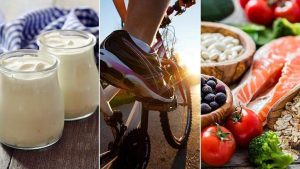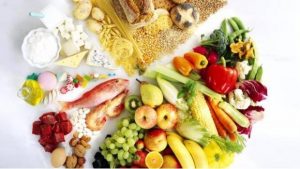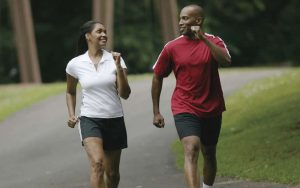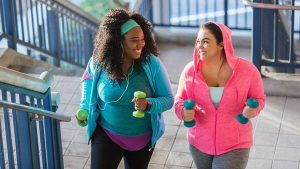
How diet & exercise can control diabetes is the focus since doctors agree that maintaining a proper diet is one key to controlling diabetes. Unfortunately, the case of diabetes is increasing due to insulin resistance in the brain. But while there is no cure for diabetes yet, diet and exercise can help. The natural compounds in foods provide you with a healthy alternative to prescription drugs. And exercise has its benefits and positive impact on diabetes.
How Diet & Exercise Can Control Diabetes: Diet Treatment
A healthy and appropriate diet is critical to diabetes treatment. It can help someone with diabetes to
- Achieve and maintain a desirable weight. Many people with diabetes can control their blood glucose by losing weight and keeping it off.
- Maintain normal blood glucose levels.
- Prevent heart and blood vessel diseases. These are conditions that tend to occur in people with diabetes.
A doctor will usually prescribe a diet as part of diabetes treatment. A dietitian or nutritionist can recommend a diet that is healthy, but also interesting and easy to follow.

Guidelines for a diabetic diet plan include the following
- 50 to 60% of daily calories should come from carbohydrates. 12 to 20% from protein. Therefore you should consume no more than 30% of fat.
- Space meals throughout the day, instead of eating heavy meals once or twice a day. This may help you avoid extremely high or low blood glucose levels.
- The best way to lose weight is gradual. For example, one or two pounds a week. You should not adopt strict diets without a doctor’s. By losing weight and reducing the intake of saturated fats and cholesterol, you can help lower blood cholesterol and reduce the risk of developing heart disease. So meats and dairy products are major sources of saturated fats and should be avoided. Most vegetable oils are high in unsaturated fats, which are fine in limited amounts. Olive oil is a good source of monounsaturated fat, the healthiest type of fat. While the liver and other organ meats and egg yolks are particularly high in cholesterol. A doctor or nutritionist can advise someone on this aspect of the diet.
- Foods with fiber, such as fruits, vegetables, peas, beans, and whole-grain bread and cereals may help lower blood glucose.

The goal of a diabetes diet
One major goal of a diabetes diet is to maintain normal blood glucose levels. Therefore, it would be helpful to have reliable information on the effects of foods on blood glucose. For example, foods that are rich in carbohydrates, like bread, cereals, fruits, and vegetables break down into glucose during digestion. This causes blood glucose to rise.
Although, research is still trying to determine whether foods with sugar raise blood glucose higher than foods with starch. Experts do know that cooked foods raise blood glucose higher than raw, unpeeled foods. A person with diabetes can ask a doctor or nutritionist about using this kind of information in diet planning.

How many alcoholic beverages?
Most people with diabetes can drink alcohol safely if they drink in moderation. Like one or two drinks occasionally. But, in higher quantities, alcohol can cause health problems. These are the reasons why:
- Alcohol has calories without vitamins, minerals, and other nutrients that are essential for maintaining good health. A doctor can discuss whether it’s safe for an individual with diabetes to drink.
- Alcohol on an empty stomach can cause low blood glucose or hypoglycemia. Hypoglycemia is a particular risk in people who use oral medications or insulin for diabetes. It can cause shaking, dizziness, and collapse.
- Oral diabetes medications-tolbutamide and chlorpropamide-can cause dizziness, flushing, and nausea when combined with alcohol.
- Frequently, heavy drinking can cause liver damage over time. This is because of the fact that the liver stores and releases glucose. And blood glucose levels may be more difficult to control in a person with liver damage from alcohol.
- Frequent heavy drinking also can raise the levels of fats in the blood, increasing the risk of heart disease.

Diabetes food fixes
Add these sugar-stoppers to your shopping list:
- Tea: Chemicals known as polyphenols found in black, green, and oolong teas boost insulin activity.
- Cinnamon: Less than half a teaspoon daily increases sugar metabolism in fat cells.
- Buckwheat: Buckwheat contains chemical compounds that reduce blood sugar levels.
- Cherries: Contain chemicals called anthocyanins that increase insulin production.
- Guava: Extracts from apple guavas lower blood sugar levels.
- Cocoa: Decreases insulin resistance.
How Diet & Exercise Can Control Diabetes: Exercise Treatment
A thorough physical exam by a doctor is essential before starting an exercise program. Exercise has many benefits. And for someone with diabetes, regular exercise combined with a good diet can help control diabetes.

Benefits
Exercise burns calories and improves the body’s response to the hormone insulin. Consequently, following a regular exercise program can make oral diabetes medications and insulin more effective. It also can help control blood glucose levels.
Exercise also reduces some risk factors for heart disease. For example, exercise can lower fat and cholesterol levels in the blood which increases heart disease risk. It also can lower blood pressure and increase the production of good cholesterol, which protects against heart disease.
Risks
However, infrequent, strenuous exercise can strain muscles and the circulatory system. These can increase the risk of a heart attack during exercise. The doctor will consider how well-controlled a person’s diabetes is and the condition of the heart and circulatory system. The doctor also determines whether complications require that the person avoid certain types of activity.

Walking is best
Walking is a great exercise, especially for an inactive person. It is also easy to do. You can start off walking for 15 or 20 minutes, three or four times a week. And gradually increase the speed or distance of the walks. If you are taking oral drugs or insulin, you need to remember that strenuous exercise can cause dangerously low blood glucose. As such you should carry food or drink high in sugar for medical emergencies.
Wear an exercise bracelet
Signs of hypoglycemia include hunger, nervousness, shakiness, weakness, sweating, headache, and blurred vision. As a precaution, a person with diabetes should wear an identification bracelet or necklace. This is to alert a stranger that the wearer has diabetes. Therefore may need special medical help in an emergency.

Talk to your doctor first
A doctor may advise someone with high blood pressure or other complications to avoid exercises that raise blood pressure. For example, lifting heavy objects and exercises that strain the upper body raises blood pressure.
People with diabetes who have lost sensitivity in their feet also can enjoy exercise. However, they should choose shoes carefully and check their feet regularly for breaks in the skin that could lead to infection. Swimming or bicycling can be easier on the feet than running.
The purpose of a good exercise program is to find an enjoyable activity and do it regularly. But doing strenuous exercise for six months and then stopping is not as effective.
Summary
 Diet
Diet
A diabetes diet should do three things. Firstly, achieve an ideal weight. Secondly, maintain normal blood glucose levels Thirdly, limit foods that contribute to heart disease. A nutritionist or dietitian can help plan a diabetes diet.
Exercise
Exercise has three major benefits. Firstly, it burns calories. Secondly, it improves the body’s response to insulin. Thirdly, reduces risk factors for heart disease. An exercise program should be started slowly and with the advice of a doctor.
https://www.webmd.com/diabetes/tips-diabetes-lifestyle#1
Photo Credit: Creative Commons


